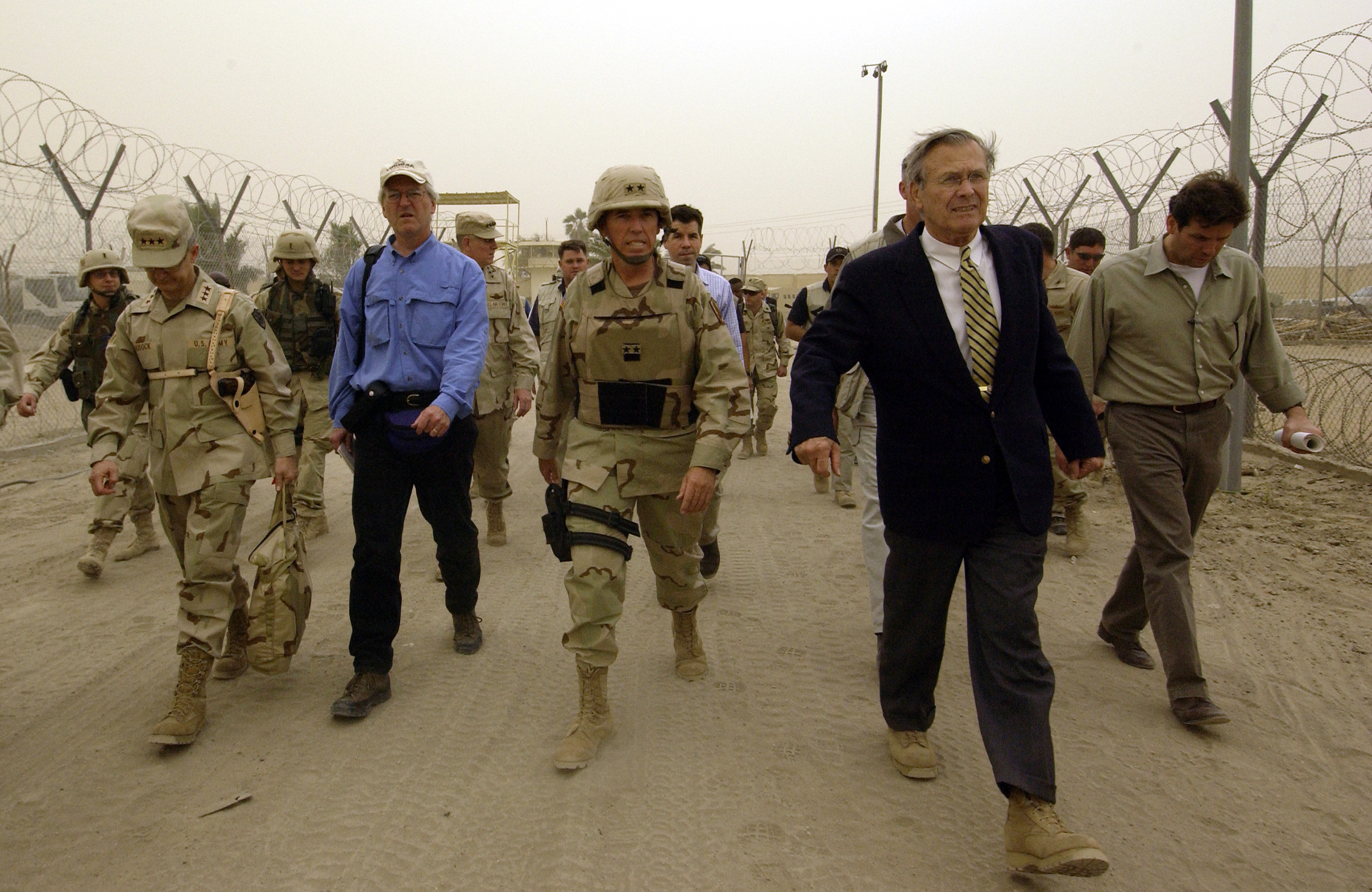Abu Ghraib prison is a prison facility near Baghdad, in Iraq. United States forces detained prisoners of war, including suspected terrorists, at the prison during the first three years of the Iraq War (2003-2011). Abu Ghraib became the subject of international controversy in 2004, when photographs were released showing U.S. soldiers abusing Iraqi prisoners at the facility.
Background.
In the mid-1960’s, British contractors began the construction of the Abu Ghraib prison about 20 miles (32 kilometers) west of central Baghdad. The 280-acre (113-hectare) prison opened in 1970.
The prison gained a reputation for brutality after Saddam Hussein became president of Iraq in 1979. Reports indicated that thousands of political prisoners were tortured and executed at the prison, primarily during the Iran-Iraq War (1980-1988). Many of those killed were Shī`ite Muslims, Kurds, or Iraqis of Iranian origin. Investigators later found the sites of several mass graves within or near the prison grounds.
In 2002, U.S. authorities, arguing that Hussein had been concealing illegal weapons programs, began building a case for the invasion of Iraq. On Oct. 20, 2002, Hussein declared an amnesty (forgiveness for past crimes) for the prisoners inside Abu Ghraib. Some reports claimed that as many as 13,000 inmates were freed.
American control and scandal.
The United States led a coalition of countries in an invasion of Iraq in March 2003. Coalition forces captured Baghdad in April. In May, U.S. President George W. Bush declared that major combat operations in Iraq had ended. However, numerous guerrilla attacks and bombings continued, targeting coalition troops, Iraqi security forces, and civilians.

American authorities began holding prisoners of war and other “high value” detainees at Abu Ghraib in mid-2003. Officers of the U.S. Army’s 800th Military Police Brigade were among the authorities that oversaw the prison.
In January 2004, the military began an investigation of reports of prisoner abuse at Abu Ghraib. On April 28, news reports revealed photographs showing American guards threatening, beating, and sexually humiliating prisoners there. The photos had been taken in late 2003. The Bush administration soon began an investigation into guards’ conduct at the prison. The investigation led to criminal charges against 11 soldiers, including military police and members of a military intelligence unit that interrogated prisoners. Nine of the soldiers received prison sentences. Private First Class Lynndie R. England, who featured prominently in the photographs, was sentenced in September 2005 to three years in a military prison. The alleged ringleader of the abuses, Corporal Charles A. Graner, Jr., received a 10-year sentence in January 2005.
The scandal sparked international outrage and condemnation, particularly from Muslims and human rights groups. Public opinion polls suggested that the scandal had damaged the international reputation of the United States and turned many Americans against the war. The United States closed the prison in 2006 and transferred some 4,500 of its prisoners to detention centers elsewhere in Iraq. Iraqi authorities then assumed control of the facility.
Later developments.
Iraqi authorities upgraded the prison, now called Baghdad Central Prison, before reopening it in 2009.
In July 2013, Islamic militants attacked the prison and freed more than 500 prisoners. The militants were fighting for a Sunni extremist group called the Islamic State (often known by the initials ISIS or ISIL), based in Iraq and Syria.
The Iraqi government temporarily shut down the prison in April 2014. Authorities said they feared that the prison could become overrun by Islamic State militants. About 2,400 prisoners there were transferred to other prisons.
